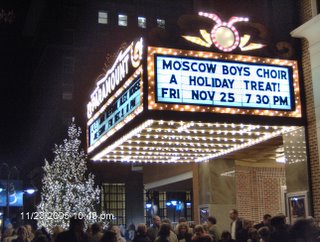Writing in the Washington Post in a piece entitled "Indiana's Book of Daniels," Will points out the divide in the Republican party and conservative movement between social conservatives, who want to use social engineering to control the lives of citizens, and libertarian conservatives, who don't. Referring to Indiana Governor Mitch Daniels, who was once a high-ranking official in both the Reagan and Bush 43 administrations, Will says:
In the division between social conservatives, who emphasize nurturing virtue, and libertarian conservatives, who emphasize expanding liberty by limiting government, Daniels is with the latter. For example, regarding immigration, an issue that dramatizes this division, many social conservatives are restrictionists, but Daniels, whose state's population is, he says, "getting older and not growing," welcomes immigrants, who usually are "young people with dreams -- a good development."Will provides several concrete examples of how Daniels has cut Indiana's state budget. The individual items may seem trivial, but as Senator Everett McKinley Dirksen once said, "a billion here, a billion there, pretty soon you're talking about real money."
Ending bottled water for employees of the Bureau of Motor Vehicles (annual savings, $35,000).Nor is Mitch Daniels the only Indiana politician who cares about cutting spending to sensible amounts. Representative Mitch Pence (whom I have cited elsewhere), is trying to bring responsibility to the federal government, too:
Ending notification of drivers that their licenses are expiring; letting them be responsible for noticing (saving $200,000).
Buying rather than renting floor mats for BMV offices (saving $267,000 this year).
Initiating the sale of 2,096 surplus state vehicles (so far, $1.95 million in revenue from 1,514 sales).
Changing the state lottery's newsletter from semimonthly and in color to a monthly and black-and-white (annual savings, $21,670).
And so on, and on, agency by agency.
What is it about Indiana? In this annus horribilis for conservatives, one of their few reasons for rejoicing has been the ascent to influence in the U.S. House of Representatives of the Republican Study Committee, more than 100 parsimonious members under the leadership of Mike Pence, a third-term Hoosier from a few miles east of here. The RSC's doctrine, a response to a one-third increase in federal spending during the current president's first four years, might be called Danielsism, which is: There is more to limited government than limiting its spending, but there will be nothing limited about government unless its spending is strenuously limited.Will suggests that political leaders like Daniels and Pence are learning from the intellectual libertarian movement, represented by organizations like the Cato Institute and Reason Foundation. He cites the former editor of Reason
This tenet of traditional conservatism, although more frequently affirmed than acted on, is producing fresh plans for action. A 24-page RSC proposal calls for rescinding $25 billion in pork spending from the transportation bill, saving $30.8 billion by delaying for one year the start of the Medicare prescription drug entitlement, and much more.
Daniels believes that Danielsism, far from being an exercise in small-mindedness, actually serves a large vision. He subscribes to a distinction made by Virginia Postrel in her book "The Future and Its Enemies" -- the distinction between advocates of stasis and advocates of dynamism. The former believe in managing the unfolding of the future.
The latter believe in minimal management of that unfolding; hence they believe in minimizing government, which has a metabolic urge to manage and a stake in preserving the status quo that government's bureaucracies are comfortable serving.
In the introduction to her book (an autographed copy of which sits in the libertarian section of my home library), Postrel explains more fully the difference between stasism and dynamism:
... Static visions depend on hiding the connections between disparate aspects of life. My purpose is to expose them. Stasists gain credibility by treating dynamism as a shallow fad. My aim is to reveal its rich heritage. Stasists thrive by issuing prescriptions that ignore the details of life, believing that details are unimportant, the stuff of anonymous specialists, and can safely be ignored. My goal is to encourage respect for those details, even when they can only be evoked in passing. Piling up widely divergent examples, reflecting a tiny sample of the plenitude of life, is one way to do that.Using the categories of "stasist" and "dynamist" is not the same as assigning the values of "right" or "left" or "conservative" or "liberal." In Postrel's typology, someone like Pat Buchanan, an icon of the right, is a stasist, as is left-wing thinker Jeremy Rifkin. Wal-Mart bashers, like documentary film director Robert Greenwald
Stasist social criticism -- which is to say essentially all current social criticism -- brings up the specifics of life only to sneer at or bash them. Critics assume that readers will share their attitudes and will see contemporary life as a problem demanding immediate action by the powerful and wise. This relentlessly hostile view of how we live, and how we may come to live, is distorted and dangerous. It overvalues the tastes of an articulate elite, compares the real world of trade-offs to fantasies of utopia, omits important details and connections, and confuses temporary growing pains with permanent catastrophes. It demoralizes and devalues the creative minds on whom our future depends. And it encourages the coercive use of political power to wipe out choice, forbid experimentation, short-circuit feedback, and trammel progress.
... A word about terminology: Stasis and dynamism are ordinary words, and I use them in a fairly ordinary way, to represent stable or evolving states. The only variation from the conventional meaning is that I use dynamism more precisely, meaning not just change but evolution through variation, feedback, and adaptation. Stasis and dynamism may be actual or envisioned states; their qualities, in either case, are described as static or dynamic. The coined words stasist and dynamist -- which, like feminist or socialist, may be either nouns or adjectives -- refer to intellectual positions and the people who hold them. A dynamist is one who supports dynamism.
For readers who would like more informaiton about the ideas in this book, I have established a Web site at www.dynamist.com.
Dynamists include people like Wal-Mart founder Sam Walton, author and public intellectual Jane Jacobs
Science writer Ron Bailey addresses some of these same issues in his new book on advances in biotechnology and the opposition they face. As noted in a recent issue of The Hook,
If you're like most people, you probably avoid talking about politics and religion. Well, Charlottesville journalist Ron Bailey isn't most people. In fact, he relishes biotechnology debates-- and they usually involve both religion and politics.A few weeks ago, I saw Bailey speak before an audience at the University of Virginia, in a lecture sponsored by Students for Individual Liberty, and he gave an entertaining outline of his book based upon his original subtitle (rejected by the publisher): "Why You Should Relax and Enjoy The Brave New World of Immortality, Stem Cells, and Designer Babies." His remarks were both provocative and informative.
As the science correspondent for Reason magazine, Bailey often finds himself extolling the merits of cloning, euthanasia, and harvesting stem cells. And in his most recent book, Liberation Biology: The Scientific and Moral Case for the Biotech Revolution, he addresses pretty much every touchy subject in the field.
The book, released in July, attacks both the Academy and the Administration. Bailey goes after prominent Boston University bioethicist George Annas for his "precautionary principle" as well as Dr. Leon Kass, the former head of the President's Council on bioethics.
"The Bush administration doesn't much care for me," says Bailey.
What exactly is it about the man that compels him to endorse such unpopular subjects?
"I'm a technological optimist," says Bailey, "and a lot of people-- both left-wingers and right-- focus only on the bad possibilities of science. We create these scary monsters that never come true."
But back to the main point: We certainly need more dynamists in public office, so my hat, like George Will's, is off to Indiana Governor Mitch Daniels.










































